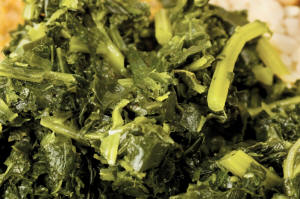|
 And too, the New Year can mean a lot of different things to
people. The turn of the calendar year can be a time to let go of the
past and start fresh. Commonly, people use the New Year to fulfill a
resolution like losing weight, saving money, going on a trip, or
changing their eating habits. And too, the New Year can mean a lot of different things to
people. The turn of the calendar year can be a time to let go of the
past and start fresh. Commonly, people use the New Year to fulfill a
resolution like losing weight, saving money, going on a trip, or
changing their eating habits.
The first day of the New Year, January 1st was actually instituted
by Julius Caesar. He did this to honor Janus, the Roman god of
beginnings, who allowed a look back into the past and forward into
the future. The Romans celebrated the New Year by exchanging gifts,
decorating their homes and attending parties. These traditions are
not too far off from how we celebrate today.
For a period during medieval times in Europe, Christian leaders
temporarily replaced January 1 as the first of the year with days
carrying more religious significance, such as December 25 (the
anniversary of Jesus’ birth) and March 25 (the Feast of the
Annunciation). It was with Pope Gregory XIII that January 1st was
reestablished as New Year’s Day in 1582. ( history.com/topics/holidays/new-years
)
 The Holiday’s today draw families together and when families are
together, food becomes a focus.
According to epicurious.com, there are lucky foods for the New Year.
So the opportunity presents itself, why not enjoy food you love and
hopefully increase your fortune? What would you have to lose?
Here are some foods and an explanation of why they might be lucky:
The first is grapes. People partaking in New Year’s in Spain will
eat twelve grapes at midnight, one for each stroke of the clock.
Each grape represents a different month and the goal is to swallow
all of the grapes before the last stroke of midnight. How it goes
may be a predictor of the year. So, if the fourth grape you eat is
sour, April may be a rough month.

Second is cooked greens including cabbage, kale and collards. Their
leaves are green and appear to look like folded money, which is
symbolic of economic fortune. Eat plenty.
Third are legumes, including peas and lentils. Their appearance
resembles coins that swell when they are cooked so they are consumed
with financial rewards in mind.
Fourth is pork. The custom of eating pork on New Year’s comes from
the idea that pigs symbolize progress.
[to top of second column] |

There are also foods to avoid when bringing in the New Year.
Lobster is a bad choice because they move backwards and could lead to setbacks.
Chicken is not recommended either because it scratches backwards, which could
mean regret or dwelling on the past.
Also avoid eating any winged fowl because it could potentially fly away.
Okay, so there are a few of the guidelines to follow when choosing your New
Year’s dinner. However, there is one more superstition. In Germany, it is
customary to leave a little bit of each food on your plate past midnight to
guarantee a stocked pantry in the New Year.
It is rather interesting to see the different rituals, superstitions and
celebrations that take place every New Year. So, when bringing in the New Year
be happy, grateful and love more than in the last year and this will definitely
set the stage for a great year!
References:
http://www.history.com/topics/holidays/new-years
http://www.epicurious.com/articles
guides/holidays/newyearsday/luckyfoods

|